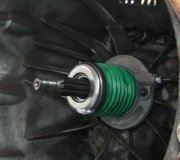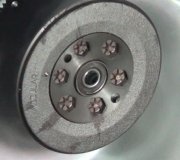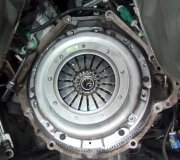Good evening
Below is the bleeding procedure for the clutch slave and master.
Roy
Information:
Subject:
Improved Bleeding Procedure for Hydraulic Clutch Release System
Models:
2007 and Prior GM Passenger Cars and Light Duty Trucks (including Saturn)
2007 and Prior Chevrolet and GMC 6-7F T-Series Medium Duty Tilt Cab Models
2007 and Prior Isuzu F-Series Medium Duty Tilt Cab Models
2006-2007 HUMMER H3
Supercede:
This bulletin is being revised to add model years. Please discard Corporate Bulletin Number 01-07-31-002A (Section 07 - Transmission/Transaxle). This bulletin is being issued to inform dealers of an improved procedure to aid in the ease of bleeding the clutch hydraulic system for the above listed vehicles. This procedure can be used anytime air is introduced into the hydraulic system. Following this procedure may also reduce the number of unnecessary parts replaced for low clutch pedal reserve and high shift effort.
Verify that all the lines and fittings are dry and secure.
Clean the dirt and grease from the reservoir cap in order to ensure that no foreign substances enter the system.
Remove the reservoir cap.
Fill the reservoir to the proper level with the required fluid.
Attach the J 43485 (Adapter) to the J 35555 (Mity Vac), or equivalent.
Brake fluid will deteriorate the rubber on J 43485. Use a clean shop cloth to wipe away the fluid after each use.
Place and hold the adapter on the reservoir filler neck to ensure a tight fit. In some cases, the adapter will fit into the reservoir opening.
Apply a vacuum of 51-68 kPa (15-20 hg) and remove the adapter.
Refill the reservoir to the proper level.
Repeat Steps 6 and 7.
If needed, refill the reservoir and continue to pull a vacuum until no more bubbles can be seen in the reservoir or until the fluid level no longer drops.
The vehicle will move if started in gear before the Actuator Cylinder is refilled and operational. Start the vehicle the first time in neutral to help prevent personal injury from vehicle movement and see if the transmission will shift easily into gear.
Pump the clutch pedal until firm (to refill actuator cylinder).
Add additional fluid if needed.
Test drive vehicle to ensure proper operation.
Image
Thursday, June 21st, 2018 AT 5:14 PM


